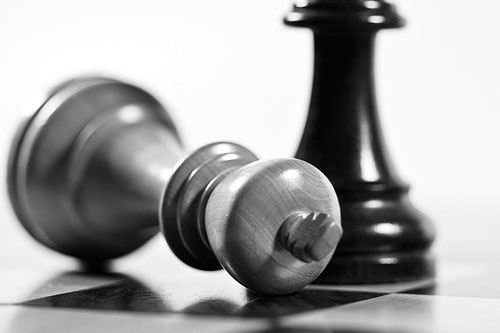Below are a few guidelines from C.J.S Purdy on playing the opening. Purdy had an incredible gift of explaning difficult chess concepts, and these rules are no exception. I also haven’t seen these rules in many other chess books, so it is important to learn and apply them in your games.
1. When you don’t play 1.e4 (…e5) early, never block your c-pawn
2. Don’t financhetto a bishop if an avenue is already open to it.
3. Don’t move any pawns other than e4(e5) or d4(d5) in the opening, the general rule is not to move any until development is complete (minor pieces out and the rooks have been connected and one of them placed on an file that is likely to become open or semi-open). With the following exceptions:
a. If you have played e4 (…e5) and it is impossible to play d4 (…d5), keep the option of f4 (…f5) and play it if you think the time is right.
b. When a piece has come down to b4 (b5) or g4 (g5), you can ask it to move with a3 (a6) or with h3(h6). DO NOT PLAY a3(a6) or h3(h6) to stop the piece from coming down, that gives up a move for nothing at all.
4. An exchange loses a move if the opponent captures with a developing move. This should be avoided unless you have to lose a move in development in any case.
5. When considering in taking a center pawn the rule is:
a. If the pawn is threatening to take your pawn or advance and hit a piece, usually take it.
6. When capturing, usually capture towards the center. An exception is when something has to be recaptured on c3 (…c6) or f3(…f6), here it is usually good to take with the center pawn instead of with the flank pawn as that makes an avenue for the bishop that was previously shut in by the center pawn.
7. In the opening never hesitate to exchange a knight for a bishop.
8 Exchange a bishop for a knight in the following scenarios:
a. If bishop is on b5(b4) or g5(g4) pinning a knight and you are hit by the a or h-pawns, exchange rather than lose a tempo retreating – provided that the opponent cannot recapture with a developing move.
b. If opponent can recapture with a developing move then you lose a tempo regardless and it is best to maintain the pin by retreating to a4(a5) or h4(h5).
9. As a general rule develop all other three minor pieces before the Q-bishop.
a. Only time to develop the Q-bishop early is when you are White in the Queen’s Pawn Game, and you wish to develop the bishop in one move before playing e3.
10. Develop the rooks on their most effective files as soon as you can.
11. The Queen has to be moved off the back rank to free the rooks; but she should usually be moved only one square, to the file that is least likely to be opened (usually e2 (e7) is a good square for the Queen).
12. It is bad to put a Queen on an open file; it only means the loss of a tempo later, when the file is taken by an enemy rook.
